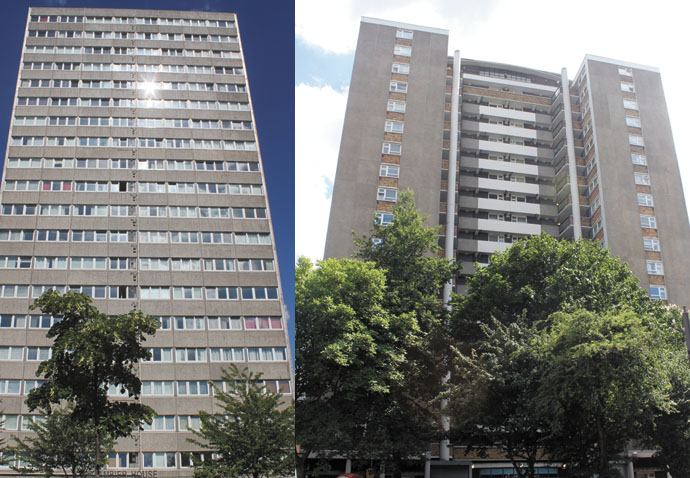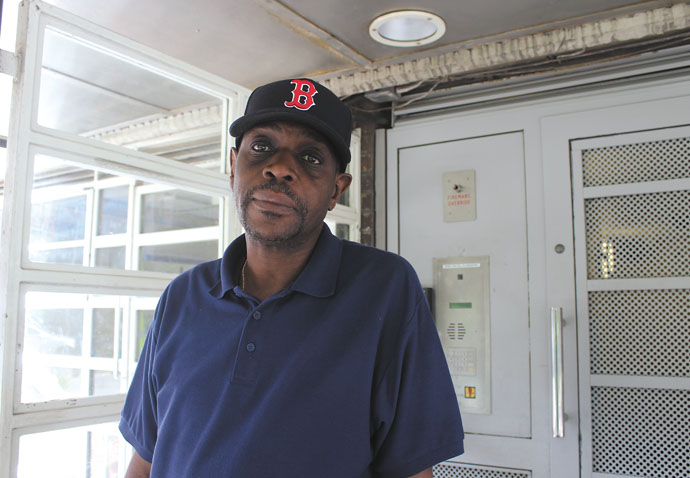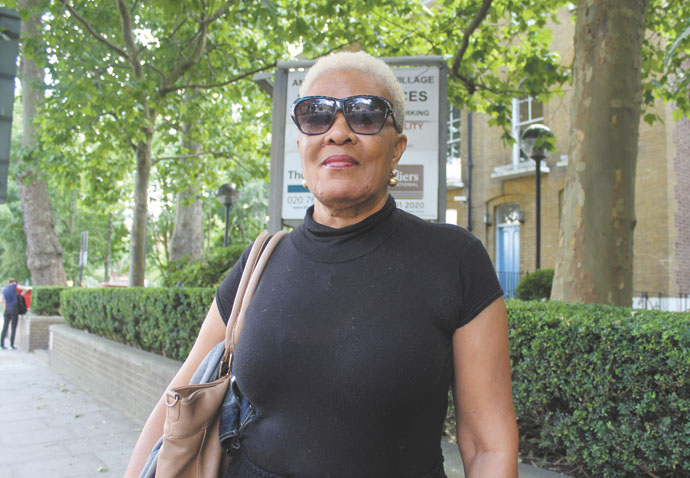High-rise flats refurbishment is put on hold after Grenfell Tower disaster
After Grenfell fire disaster, Islington Council chiefs reassure residents in borough's tower blocks over safety
Friday, 16th June 2017 — By Emily Finch and Koos Couvée

Gambier House in Finsbury (left), and Kestrel House in Pickard Street, off City Road
THOUSANDS of Islington tower block residents were reassured this week that Town Hall chiefs have put plans to refurbish four towers on hold – after the horrific high-rise fire in west London that killed and injured scores of people.
Seventeen residents have been confirmed dead, with the number expected to rise, after a fire ripped through Grenfell Tower in north Kensington on Wednesday. The disaster has raised questions over fire safety at similar blocks in Islington, in particular the external cladding – material used around buildings to provide insulation and improve appearance – which experts have said may have contributed to the rapid spread of the blaze.
Claudia Webbe, Islington Council’s environment chief, said plans to put new cladding on four council blocks – Arlington House in Angel, Gambier House in Finsbury, Haliday House in Mildmay and Ilex House in Finsbury Park – have been put on hold.
“We had to put the scheme on hold because of a cut in funding some time ago,” she said.
“We now have a lot of time to review specifications [of materials, including cladding] so that they are fit for our times. We are looking at the cost implications. We are still in the early stages, and what are the specifications going to be, particularly given what’s happened at Grenfell Tower.”

Gambier House resident Kenny Thomas
She added: “But it’s not the case we will never do it [insulate the blocks] because for residents at Gambier House insulation is still a particular concern.”
Council officers are also conducting a review of buildings – publicly and privately owned – to see if the type of cladding used in the refurbishment of Grenfell Tower has been used anywhere in Islington.
Residents at Gambier House said they wanted the council to review fire prevention measures in their building. Kenny Thomas, 53, who has lived in the 19-storey building for 10 years, said: “If it happens there it can happen anywhere, you know. Luckily we’ve been fortunate so far.”
Tony Moran, 72, who lives on the fifth floor, said he was concerned about the cladding which was planned for next year’s refurbishment.
Residents at the council-owned Kestrel House in Pickard Street, off City Road, said they still had concerns about the fire safety procedures in place at their home, four years after a fire saw a man hospitalised and a five-bedroom flat destroyed.
Victoria Japaul, 68, whose son was in the flat when the fire broke out in 2013, said there were no major changes enforced at the 17-storey tower following the fire.
At the time of the blaze, fear and confusion took over the block as residents were unsure as to whether to flee or sit tight in their flats. This week the Town Hall reiterated London Fire Brigade’s advice for people living in high-rise blocks, which is that if there is a fire elsewhere in the building people are usually safer to stay in their flat unless heat or smoke is affecting them, in which case they should leave via the stairs if it is safe to do so.

Kestrel House resident Victoria Japaul
If not, people are urged to call 999 and state which flat they are in. Kestrel House resident Tracey Harrington, 52, said the council should install sprinklers in the block.
Asked whether she thought all council tower blocks should now have sprinkler systems retrofitted, Cllr Webbe added: “Until everything is looked at [at Grenfell], it is too early to make that statement.”
A refurbishment project at Grenfell Tower saw aluminium composite material (ACM) used for cladding. Islington Council planning documents for three of the four council blocks mention a cladding system called Equitone, which is classified as non-flammable by European standards. A Town Hall spokeswoman said that ACM was not part of the contract description.
The project was put on hold after the government cut funding for the Energy Company Obligation (ECO) – the government scheme that orders larger energy suppliers to install energy efficiency measures in homes.
An Islington Council spokesman said: “We take fire safety extremely seriously and always follow the most up-to-date advice on all aspects of building safety. All of our blocks of flats are regularly inspected.
“We, like other authorities, will want to know as soon as possible what caused the terrible fire at Grenfell Tower and why it spread so quickly. If action is needed as a result, we will take it.”
Prime Minister Theresa May ordered a public inquiry into the cause of the fire at Grenfell Tower yesterday (Thursday).
TRIBUNE COMMENT: Tackle this scandal now – not tomorrow
THE horrific fire in the West London tower block has exposed a scandal that has been eating away at the fabric of Britain for years – ever since Mrs Thatcher and later governments started to run down the public sector and dangerously deregulate the historic rules governing municipal housing.
Why is it that a fire of this nature happened in a public block? Basic safety precautions, such as the installation of sprinklers and loud alarm systems, were apparently missing. This would never have happened if it were a private tower. Before deregulation, safety certificates for buildings could only be given by a local authority. Today, they can be granted by private companies approved by a local authority. A big difference.
In Islington, unlike Camden, council housing fell into the hands of tenants’ management boards, who are unaccountable, not subject to democratic control exercised through the electoral process.
We were assured by Labour councillors they would bring them in-house under the control of the Town Hall, where there is a body of expertise on planning issues and housing. Council officials are obviously not infallible but mistakes are less likely to occur. Is the council attempting to corral the tenants’ bodies – or is it dragging its feet? Tenants, of course, should be closely involved in running estates, but matters of fire safety and adherence to planning regulations should be left with trained experts.These regulations were pushed aside by governments from the 1990s onwards – partly to save money, partly as part of a move to run down the public sector. We are now paying the price.
Pathetically, Theresa May can only offer that age-old British solution to a social problem – a public inquiry.
This, of course, would takes months, if not years, to reach any conclusions. Mrs May wants to kick it into the long grass.
Tenants need iron-clad assurances that cladding at their blocks is fireproof – and not of the kind that enveloped Grenfell Tower.
It is to be welcomed that the council has taken the first step by putting all cladding projects on hold. In general, though, Islington – although in possession of powers, for example, to insist on the installation of sprinklers – needs to deal with this scandal now. Not tomorrow.